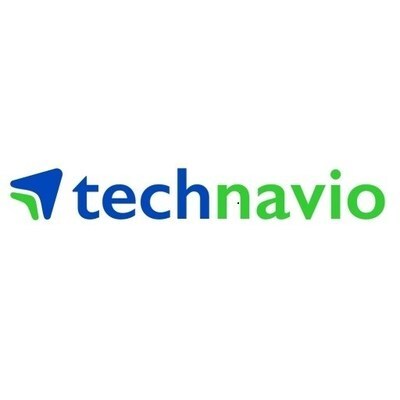In-Vitro and In-Vivo Micro Electrode Array Market to Grow by USD 7 Million (2024-2028), Driven by MEA Applications in Neuroscience Research, with AI Driving Market Transformation – Technavio

NEW YORK, Dec. 3, 2024 /PRNewswire/ — Report with the AI impact on market trends – The global in-vitro and in-vivo micro electrode array market size is estimated to grow by USD 7 million from 2024-2028, according to Technavio. The market is estimated to grow at a CAGR of about 4.3% during the forecast period. Extensive use of meas in neuroscience research is driving market growth, with a trend towards potential application of in-vitro and in-vivo mea in cancer tissue detection. However, limitations of meas poses a challenge. Key market players include 3Brain AG, Alpha Omega Engineering Ltd., Axion BioSystems Inc., Blackrock Microsystems Inc., Cambridge NeuroTech, FHC Inc., Harvard Bioscience Inc., IMEC Inc., Innovative Neurophysiology Inc., MaxWell Biosystems AG, Microprobes for Life Science, MICRUX FLUIDIC S.L., NeuroNexus Technologies Inc., NMI Technologie Transfer GmbH, Plexon Inc., Ripple Neuro, Screen Holdings Co. Ltd, SpikeGadgets, Tucker Davis Technologies, and World Precision Instruments.
Key insights into market evolution with AI-powered analysis. Explore trends, segmentation, and growth drivers- View Free Sample PDF
|
In-Vitro And In-Vivo Micro Electrode Array Market Scope |
|
|
Report Coverage |
Details |
|
Base year |
2023 |
|
Historic period |
2018 – 2022 |
|
Forecast period |
2024-2028 |
|
Growth momentum & CAGR |
Accelerate at a CAGR of 4.3% |
|
Market growth 2024-2028 |
USD 7 million |
|
Market structure |
Fragmented |
|
YoY growth 2022-2023 (%) |
4.0 |
|
Regional analysis |
North America, Europe, Asia, and Rest of World (ROW) |
|
Performing market contribution |
North America at 58% |
|
Key countries |
US, UK, Germany, France, and Japan |
|
Key companies profiled |
3Brain AG, Alpha Omega Engineering Ltd., Axion BioSystems Inc., Blackrock Microsystems Inc., Cambridge NeuroTech, FHC Inc., Harvard Bioscience Inc., IMEC Inc., Innovative Neurophysiology Inc., MaxWell Biosystems AG, Microprobes for Life Science, MICRUX FLUIDIC S.L., NeuroNexus Technologies Inc., NMI Technologie Transfer GmbH, Plexon Inc., Ripple Neuro, Screen Holdings Co. Ltd, SpikeGadgets, Tucker Davis Technologies, and World Precision Instruments |
Market Driver
The In-vitro and In-vivo Micro Electrode Array (MEA) market is experiencing significant growth due to increasing research in neurological disorders and cancer tissue detection. MEAs, also known as Micro Electrode Arrays, are essential tools for recording neural activity and measuring brain function. The market includes both Multiwell MEAs and Single well MEAs, with CMOS-based MEAs gaining popularity for their cost-effectiveness and high-density electrodes. Key players in the market include Pharmaceutical and Biotech companies, Contract Research Organizations (CROs), and government research labs. Trends include the development of Neurostimulation devices, Diagnostic Solutions, and Therapeutic Solutions using MEAs. New technologies like 3D nanoparticle printing, Graphene-based Electrodes, and Flexible Electrodes are enhancing MEA capabilities. Neuroengineering applications, such as Brain-Computer Interfaces, Deep Brain Stimulation, and Synaptic Connections, are also driving market growth. Biocompatibility and signal quality remain crucial factors, with advancements in microfabrication techniques like Photolithography and 3D Printing addressing these challenges. The market encompasses applications in Clinical Settings, Drug Development, Disease Modeling, Neuroprosthetics, and Brain-Computer Interfaces. Personalized Medicine and Wireless Recording Technologies are emerging trends, offering opportunities for Drug Candidates and improving research efficiency.
The global market for In-Vitro and In-Vivo Micro Electrode Arrays (MEAs) is witnessing significant growth due to the increasing focus on early cancer detection. Researchers and oncologists are exploring the integration of MEA technology with micro-needle arrays to monitor the electrical impedance of cancer tissue. This approach aims to study the electrical properties of various cancer cells and tissue cultures, offering potential for more accurate and patient-friendly cancer diagnosis. The market’s growth is driven by the high mortality rate of cancer and the need for advanced diagnostic tools.
Request Sample of our comprehensive report now to stay ahead in the AI-driven market evolution!
Market Challenges
- The In-vitro and In-vivo Micro Electrode Array (MEA) market is gaining significant traction in the biotech and pharmaceutical industries. MEAs, which include Micro Electrode Arrays and CMOS-based MEAs, play a crucial role in understanding neural activity and brain function for neurological disorders. In-vivo MEAs enable the recording of electrical signals from neurons in living organisms, while in-vitro MEAs are used for lab-grown neuronal networks. Challenges in this market include cancer tissue detection, biocompatibility, signal quality, and high-density electrodes. Technological advancements such as 3D nanoparticle printing, flexible electrodes, and graphene-based electrodes are addressing these challenges. Neurostimulation devices, drug development, disease modeling, and brain-computer interfaces are key applications for MEAs in clinical settings. CROs, government research labs, and Precision Instruments are major players in this market. Multiwell and single well MEAs, photolithography, and 3D printing are essential microfabrication techniques. Wireless recording technologies and personalized medicine are future growth areas.
- In-Vitro and In-Vivo Micro Electrode Arrays (MEAs) are widely used in research for studying neural activity. Advanced MEAs, such as in vitro CMO-based HDMEAs, are popular due to their capabilities. However, in vitro MEAs have limitations. They lack the high spatial resolution needed for stimulating and recording single cells, making them less suitable than dynamic clamp and patch clamp systems. Furthermore, MEA implantation, particularly chronic implantation, can result in biological responses like a decrease in functioning electrodes, glial scarring, and neuronal cell loss. These responses depend on factors such as MEA shank sizes, inter-shank distances, material composition, and implantation duration. Despite these challenges, MEAs remain a valuable tool for neuroscience research.
Discover how AI is revolutionizing market trends- Get your access now!
Segment Overview
This in-vitro and in-vivo micro electrode array market report extensively covers market segmentation by
- End-user
- 1.1 Pharmaceutical companies and CROs
- 1.2 Academic/government and other research labs
- 2.1 Multiwell MEA
- 2.2 Single well MEA
- 3.1 North America
- 3.2 Europe
- 3.3 Asia
- 3.4 Rest of World (ROW)
1.1 Pharmaceutical companies and CROs- The pharmaceutical and biotechnology industry and Contract Research Organizations (CROs) have increasingly adopted Micro Electrode Array (MEA) systems for neuroscience research. MEAs enable precise phenotypic drug screening while retaining neuronal functionality. CROs offer reduced costs and access to advanced equipment for pharmaceutical and biotechnology companies, making outsourcing an attractive option. MEAs are utilized for various research activities, from basic research to late-stage development, including genetic engineering, safety and efficacy tests, assay development, target validation, and clinical trials. Sanofi AG, Boehringer Ingelheim Pharma GmbH and Co. KG, and Janssen Pharmaceutica NV are among the companies employing MEAs for epilepsy research, cardiac safety assessment, and drug identification, respectively. The growing adoption of MEAs by these industry players is expected to fuel the expansion of the global in-vitro and in-vivo MEA market during the forecast period.
Download a Sample of our comprehensive report today to discover how AI-driven innovations are reshaping competitive dynamics
Research Analysis
In-vitro Micro Electrode Arrays (MEAs), also known as Micro Electrode Arrays, are a valuable tool in various research fields, including neuroscience and cancer tissue detection. MEAs consist of an array of electrodes that can record electrical signals from living cells or tissues. Neuroscience researchers use MEAs to study neural activity, brain function, and neuroengineering. In the biotech and pharmaceutical industries, MEAs are employed for therapeutic solutions, such as neurostimulation devices. MEAs come in different formats, including Multiwell and Single well arrays. The latest advancements in MEA technology include CMOS-based MEAs and 3D nanoparticle printing. These innovations offer improved sensitivity, accuracy, and miniaturization, making MEAs an essential diagnostic and therapeutic solution for the future. In-Vitro Microelectrode Arrays provide valuable insights into electrical signals from living cells and tissues, contributing significantly to research and development in various industries.
Market Research Overview
In-vivo Micro Electrode Arrays (MEAs), also known as Micro Electrode Arrays for Neuroscience applications, are advanced technological tools used for recording neural activity and stimulating brain tissue in real-time. MEAs find extensive applications in various fields, including neurological disorders research, drug development, disease modeling, neuroengineering, and brain-computer interfaces. In-vivo MEAs can be fabricated using different materials such as CMOS, graphene, or flexible electrodes, using microfabrication techniques like photolithography and 3D printing. These arrays offer high-density electrodes, enabling the recording of electrical signals from a large number of neurons, neural networks, and synaptic connections. In vitro MEAs are used for diagnostic solutions, while in vivo MEAs are employed in therapeutic applications like neurostimulation devices, deep brain stimulation, and neural prosthetics. MEAs have significant potential in personalized medicine, allowing for the detection of drug candidates and monitoring brain function in clinical settings. Wireless recording technologies are also being explored to enhance the versatility of MEAs. In summary, MEAs play a crucial role in understanding brain function, developing new therapies, and advancing our knowledge of brain-related disorders.
Table of Contents:
1 Executive Summary
2 Market Landscape
3 Market Sizing
4 Historic Market Size
5 Five Forces Analysis
6 Market Segmentation
- End-user
- Pharmaceutical Companies And CROs
- Academic/government And Other Research Labs
- Type
- Multiwell MEA
- Single Well MEA
- Geography
- North America
- Europe
- Asia
- Rest Of World (ROW)
7 Customer Landscape
8 Geographic Landscape
9 Drivers, Challenges, and Trends
10 Company Landscape
11 Company Analysis
12 Appendix
About Technavio
Technavio is a leading global technology research and advisory company. Their research and analysis focuses on emerging market trends and provides actionable insights to help businesses identify market opportunities and develop effective strategies to optimize their market positions.
With over 500 specialized analysts, Technavio’s report library consists of more than 17,000 reports and counting, covering 800 technologies, spanning across 50 countries. Their client base consists of enterprises of all sizes, including more than 100 Fortune 500 companies. This growing client base relies on Technavio’s comprehensive coverage, extensive research, and actionable market insights to identify opportunities in existing and potential markets and assess their competitive positions within changing market scenarios.
Contacts
Technavio Research
Jesse Maida
Media & Marketing Executive
US: +1 844 364 1100
UK: +44 203 893 3200
Email: media@technavio.com
Website: www.technavio.com/
![]() View original content to download multimedia:https://www.prnewswire.com/news-releases/in-vitro-and-in-vivo-micro-electrode-array-market-to-grow-by-usd-7-million-2024-2028-driven-by-mea-applications-in-neuroscience-research-with-ai-driving-market-transformation—technavio-302319761.html
View original content to download multimedia:https://www.prnewswire.com/news-releases/in-vitro-and-in-vivo-micro-electrode-array-market-to-grow-by-usd-7-million-2024-2028-driven-by-mea-applications-in-neuroscience-research-with-ai-driving-market-transformation—technavio-302319761.html
SOURCE Technavio



